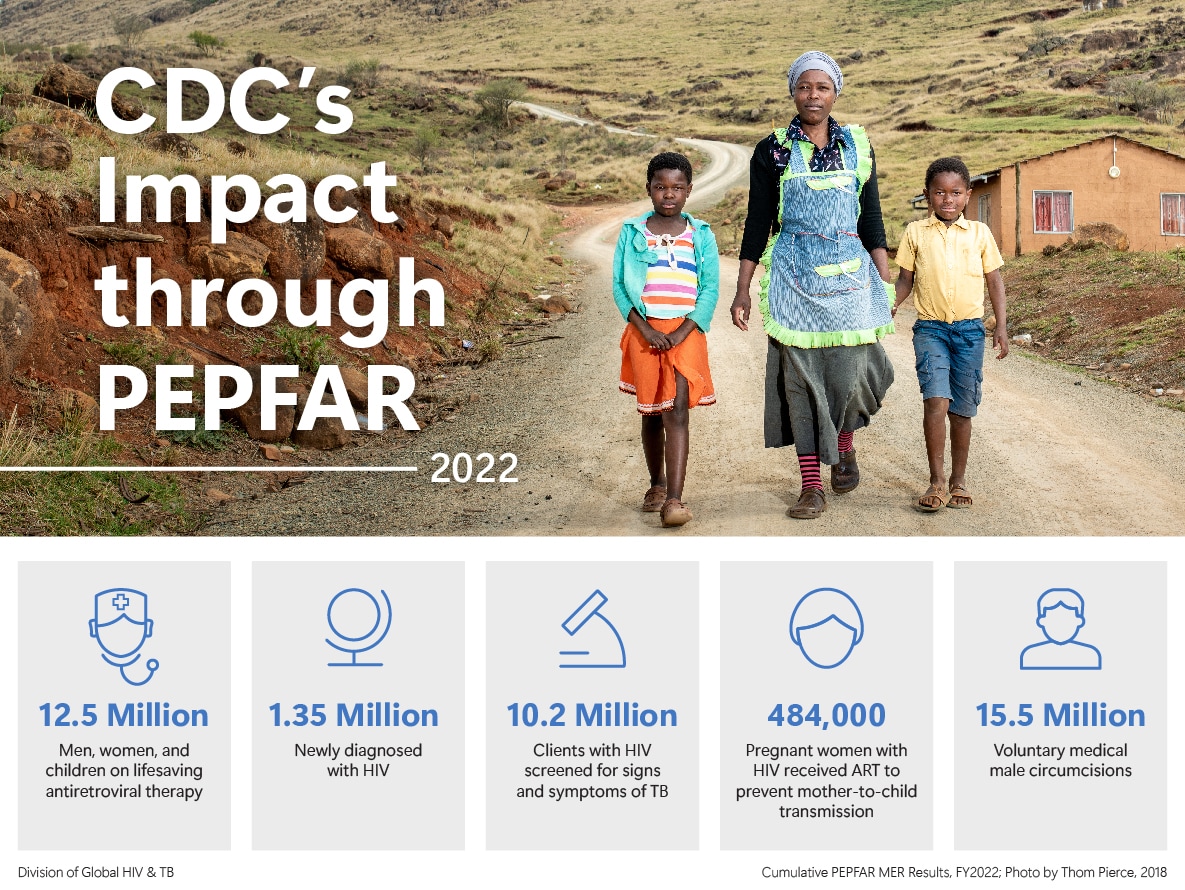CDC Partnerships and Impact on Global HIV and TB Response
With support from the U.S. President’s Emergency Plan for AIDS Relief (PEPFAR), CDC works in 46 countries and regions across Africa, Asia, the Caribbean, and Central and South America to control and ultimately end the dual epidemics of HIV and TB. CDC Division of Global HIV and TB (DGHT) world-class experts use epidemiologic, surveillance, and programmatic data to drive efficient, high-impact HIV and TB programming.

From the earliest DGHT country office established in Kenya in 1979, to the latest DGHT country office established in Philippines in 2022, CDC provides critical technical assistance in laboratory, clinical infectious disease management, and prevention sciences benefitting more than 4.5 Billion people globally.
As part of the U.S. National Public Health Institute, CDC/DGHT has built peer-to-peer partnerships over decades with host country governments and community partners. CDC’s collaboration with Ministries of Health, civil society and faith-based organizations, and other local health partners that implement HIV and TB programs, are built upon a strong foundation based on trust, and support strong, resilient systems that sustain impact.
The country profiles updated in 2022 show how CDC partners with national and subnational government agencies to support program implementation and develop public health workforce capacity in country. CDC serves a unique role within PEPFAR, bringing scientific know-how and on-the-ground expertise to lead progress toward global targets for HIV epidemic control and TB elimination. In 2022, CDC efforts accounted for more than half of all key PEPFAR outcomes for treatment and prevention of HIV and TB.
CDC provides our unique technical expertise to countries worldwide to achieve ambitious UNAIDS global HIV epidemic control targets by 2030, calling for 95 percent of all people living with HIV to know their status, 95 percent of those who know their HIV statu to be taking antiretroviral treatment, and 95 percent of those receiving antiretroviral treatment to achieve and sustain viral load suppression. With CDC’s assistance, several countries in sub-Saharan Africa have already achieved or are on the cusp of achieving these global HIV epidemic control targets, based on data from CDC-supported population-based HIV impact assessments.
CDC’s longstanding investments, unique expertise, decades of experience, and peer-to-peer partnerships are preparing governments worldwide to respond not only to the perennial HIV and TB epidemics that remain a challenge, but also equip our partners with the tools and skills they need to prevent, detect, and respond to new disease outbreaks and other emerging public health threats. Through our investments in global HIV and TB, CDC-trained technical experts, public health laboratory capabilities and networks, and disease surveillance and data systems also play a crucial role in the rapid response and support of COVID-19 response efforts in partner countries.
Learn more about where we work and our focus areas in countries and regions around the world.


